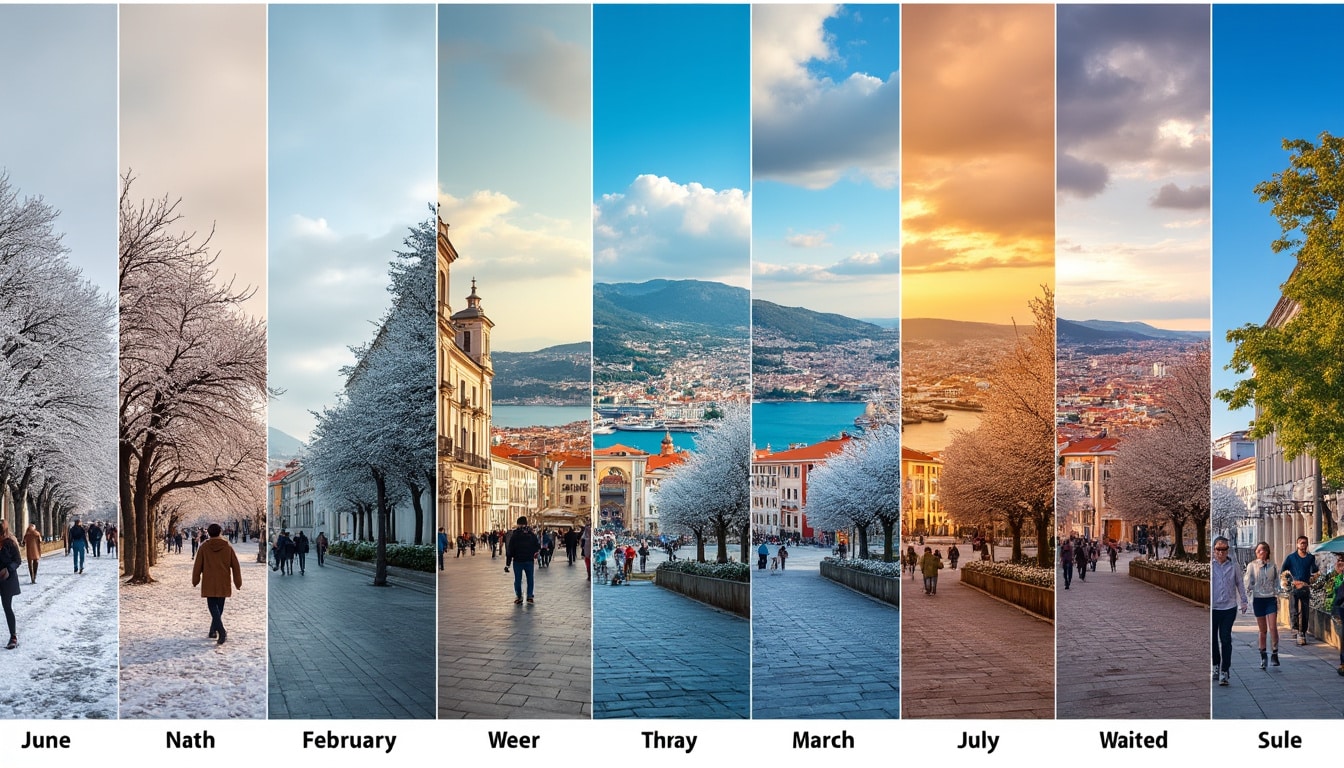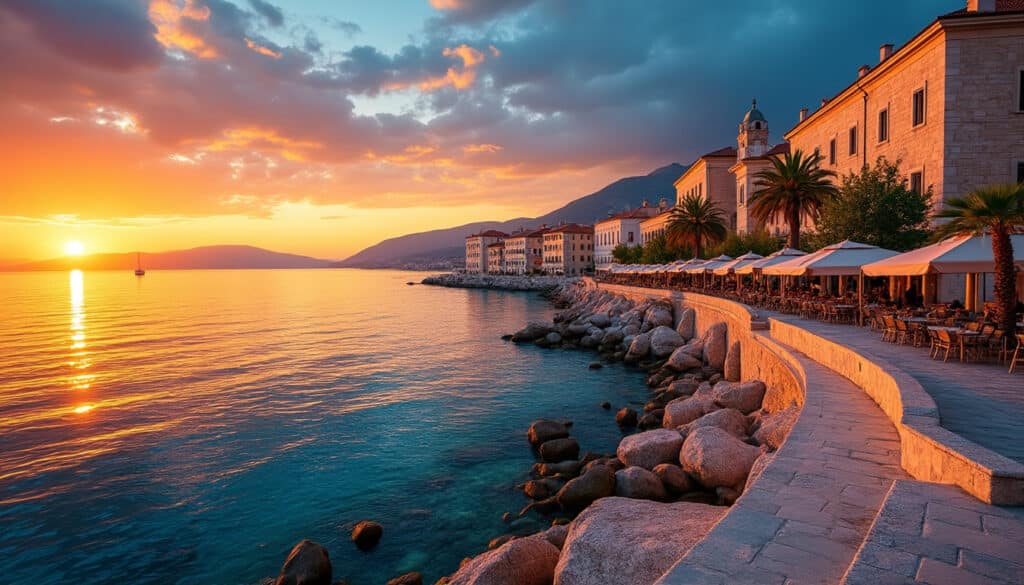Exploring the weather patterns of Split, Croatia, offers a fascinating glimpse into the coastal charm and unique climatic conditions of this historic city. Whether you’re planning a visit or just curious about the year-round weather, understanding the monthly climate of Split can enrich your experience and help you plan better. With its picturesque views and the inviting Adriatic Sea, Split is not only a destination but a journey through patterns of rain, sun, and sea breezes.
January Weather in Split: Chilly Yet Charming
January in Split is characterized by cooler temperatures and increased precipitation, marking the height of the winter season. The average high temperature hovers around 1.8°C (35.24°F), while the average low dips to around -4.7°C (23.54°F). Despite the chill, Split maintains its charm, offering a unique winter coastal experience.
Rain falls on average 16.02 days each January, and the precipitation reaches a total of 205.31 mm (8.08 inches). Humidity levels soar to a rather high 88.62%, adding a crispness to the air. For those planning to visit, embracing layers of clothing and cozy jackets is essential to navigate these wet and chilly conditions comfortably.
The city’s atmospheric setting in winter is amplified by the nearby mountains often dusted with snow, providing a stark contrast to the usual greenery. Visiting Split during this time offers a quieter, more serene experience away from the bustling summer crowds. However, tourists should be prepared for shorter daylight hours and possibly constrained outdoor activities.
- 🌧️ Average Precipitation Days: 16.02
- 🌡️ Average High Temperature: 1.8°C (35.24°F)
- 🌬️ Humidity: 88.62%
| Parameter | Value |
|---|---|
| Average High Temperature | 1.8°C (35.24°F) |
| Average Low Temperature | -4.7°C (23.54°F) |
| Average Precipitation | 205.31 mm (8.08 inches) |
| Humidity | 88.62% |
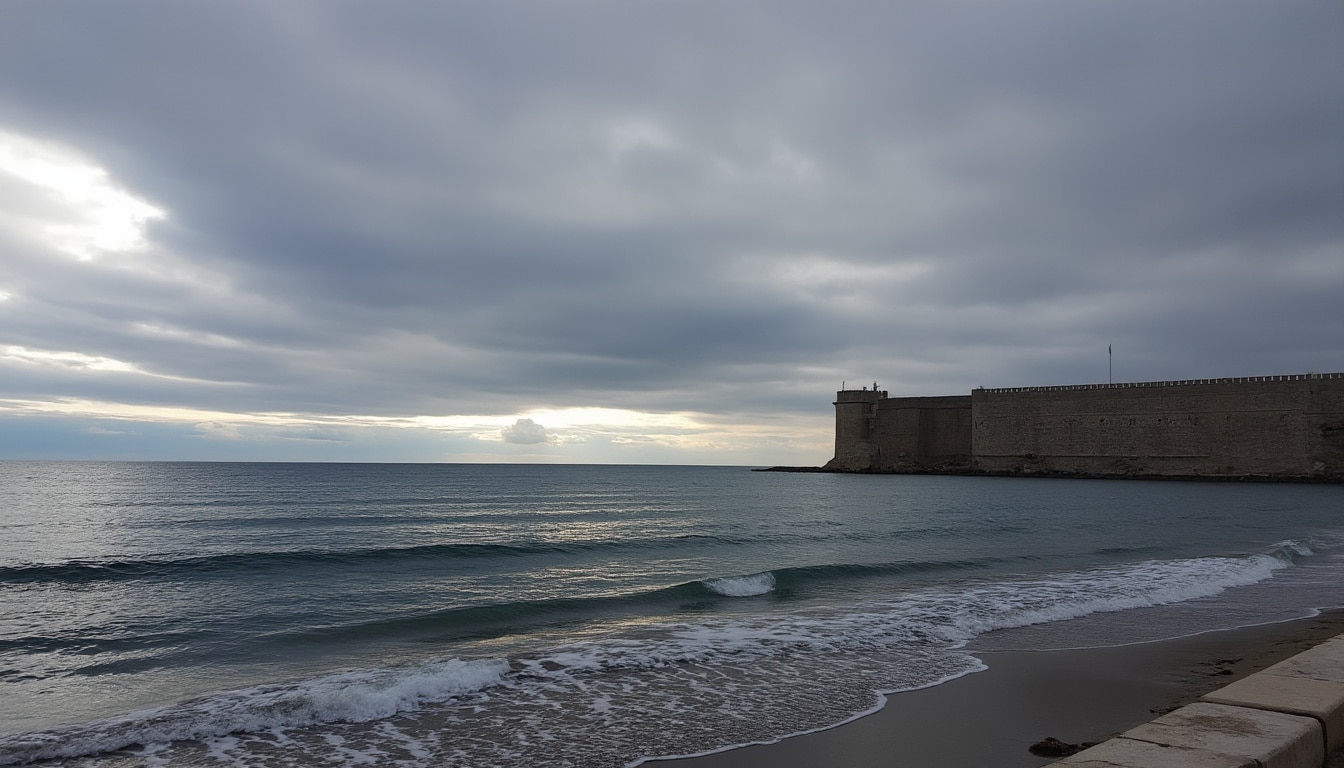
Planning a January Visit: Tips and Tricks
For those considering a trip to Split in January, there are several points to keep in mind. While the city remains cozy and welcoming, it’s important to prepare for the cold and often damp weather. Indoor activities, historic sites, and museums become more appealing options during this season. Moreover, less crowded tourist spots mean more personal and peaceful exploration. Check seasonal specials for accommodation as they are often more affordable during this period.
March Weather in Split: The Onset of Spring
March represents the transition from the hardcore winter months to a milder and more welcoming spring season in Split. Average high temperatures rise to around 6.61°C (43.9°F), while the lows moderate to about -0.5°C (31.1°F). With the mercury gradually rising, March brings an increased sense of anticipation and renewal to the city.
The month experiences about 16.47 days of rain, with total precipitation measuring up to 197.76 mm (7.79 inches). As the weather begins to stabilize, outdoor enthusiasts often mark March as a suitable time for hiking in Split’s surrounding landscapes. As temperatures rise and days lengthen, the city’s streets and cafés start bustling with activity, encouraging travelers to take leisurely walks and enjoy the burgeoning spring blooms.
- 🌼 Average High Temperature: 6.61°C (43.9°F)
- 💧 Average Precipitation: 197.76 mm (7.79 inches)
- 🌱 Average Low Temperature: -0.5°C (31.1°F)
| Parameter | Value |
|---|---|
| Average High Temperature | 6.61°C (43.9°F) |
| Average Low Temperature | -0.5°C (31.1°F) |
| Average Precipitation | 197.76 mm (7.79 inches) |
March’s unpredictable weather may pose challenges, but it equally offers opportunities to experience Split’s historic and cultural sites without the interference of summer’s bustling crowds. Visitors should dress in layers, as temperatures can vary throughout the day, and exploring Split’s museums—like the Split Archaeological Museum—can be uniquely advantageous during the rainy ones.
July Weather in Split: Summer in Full Swing
July is typically the warmest month in Split, making it an ideal time for beach visits and ocean-side activities. Temperatures easily climb to an average high of 23.92°C (75.06°F) during the day, and rarely drop below 12.32°C (54.18°F) at night, providing perfectly warm weather for evening outings.
The dry season contributes to only 17.21 days of unpredictable rain, amounting to about 158.04 mm (6.22 inches) of precipitation total. It’s during this time that Split’s beaches come alive with both locals and tourists taking full advantage of the Adriatic Sea’s beautiful, warm waters.
- ☀️ Average High Temperature: 23.92°C (75.06°F)
- 🏖️ Average Precipitation: 158.04 mm (6.22 inches)
- 🌊 Average Low Temperature: 12.32°C (54.18°F)
| Parameter | Value |
|---|---|
| Average High Temperature | 23.92°C (75.06°F) |
| Average Low Temperature | 12.32°C (54.18°F) |
| Average Precipitation | 158.04 mm (6.22 inches) |
Summer Activities and Attractions
July is synonymous with festivals and outdoor events in Split. The Diocletian Palace, a UNESCO World Heritage Site, becomes a focal point for many cultural gatherings and performances. If you prefer quieter places, explore Marjan Hill for panoramic views of the city and surrounding islands. Additionally, make sure to hydrate and protect against UV rays by wearing sunscreen, given the intense summer sun exposure.
September Weather: Transitioning to Autumn in Split
As summer winds down, September in Split heralds the arrival of autumn with generous sunshine and moderate temperatures. The average high temperature is about 19.18°C (66.52°F), while nighttime lows can drop to 9.41°C (48.94°F). The change in season is subtle yet significant, as the city experiences less rainfall with averages around 170.43 mm (6.71 inches).
The beauty of September is marked not only by its temperate climate but also by decreased tourist traffic, making it a wonderful time for a relaxed visit. The weather is comfortable for both swimming and exploring the historic facets of Split without the intense summer heat or the hefty tourist crowds.
- 🍂 Average High Temperature: 19.18°C (66.52°F)
- 🍁 Average Precipitation: 170.43 mm (6.71 inches)
- 🌧️ Days of Rain: 14.19
| Parameter | Value |
|---|---|
| Average High Temperature | 19.18°C (66.52°F) |
| Average Low Temperature | 9.41°C (48.94°F) |
| Average Precipitation | 170.43 mm (6.71 inches) |
The beauty of September lies in its balance—a sweet spot when the summer hustle wanes but pleasant weather persists. It’s advisable for visitors to explore Split’s iconic sites such as the Peristil Square and nearby beaches with improved ease and comfort.
November Weather: Navigating the Rainy Seasons in Split
November often represents a distinctive shift towards the rainier climate in Split, characterized by a high average precipitation of 263.39 mm (10.37 inches). As the wettest month, November sees around 21.15 rainy days, and temperatures range between an average high of 13.98°C (57.16°F) and a low of 5.84°C (42.51°F).
The increased precipitation might deter outdoor plans, but it also enriches the aquatic features of Split. The air takes on a pleasant freshness, and the forests surrounding the city flourish into lush green expanses. The comforting coolness paired with sudden rains creates a cozy ambiance, making indoor activities, like dining in local tavernas, more appealing.
- 🌧️ Average High Temperature: 13.98°C (57.16°F)
- ☂️ Average Precipitation: 263.39 mm (10.37 inches)
- ⛄ Average Low Temperature: 5.84°C (42.51°F)
| Parameter | Value |
|---|---|
| Average High Temperature | 13.98°C (57.16°F) |
| Average Low Temperature | 5.84°C (42.51°F) |
| Average Precipitation | 263.39 mm (10.37 inches) |
Visitors in November should account for the wet climate by bringing waterproof gear and organizing indoor-based itineraries. Exploring museums, enjoying the vibrant food scene, and experiencing cultural activities provide solace against the rain and shorter daylight hours.
FAQs on Split Weather by Month
- When is the best time to visit Split for sunny weather?
- The sunny period ranges primarily from April through October.
- The sunny period ranges primarily from April through October.
- What is the wettest month in Split?
- November, with average precipitation reaching 263.39 mm (10.37 inches).
- November, with average precipitation reaching 263.39 mm (10.37 inches).
- Is January a good time to visit Split?
- While colder and wetter, January offers a quieter, more introspective exploration of the city.
- While colder and wetter, January offers a quieter, more introspective exploration of the city.
- Are there any particular festivals in July in Split?
- Yes, festivals celebrating music and cultural performances are vibrant and numerous in July.
- Yes, festivals celebrating music and cultural performances are vibrant and numerous in July.
- How does the temperature change in September?
- Temperatures start to cool down but remain pleasant for outdoor activities and beach visits.
- Temperatures start to cool down but remain pleasant for outdoor activities and beach visits.
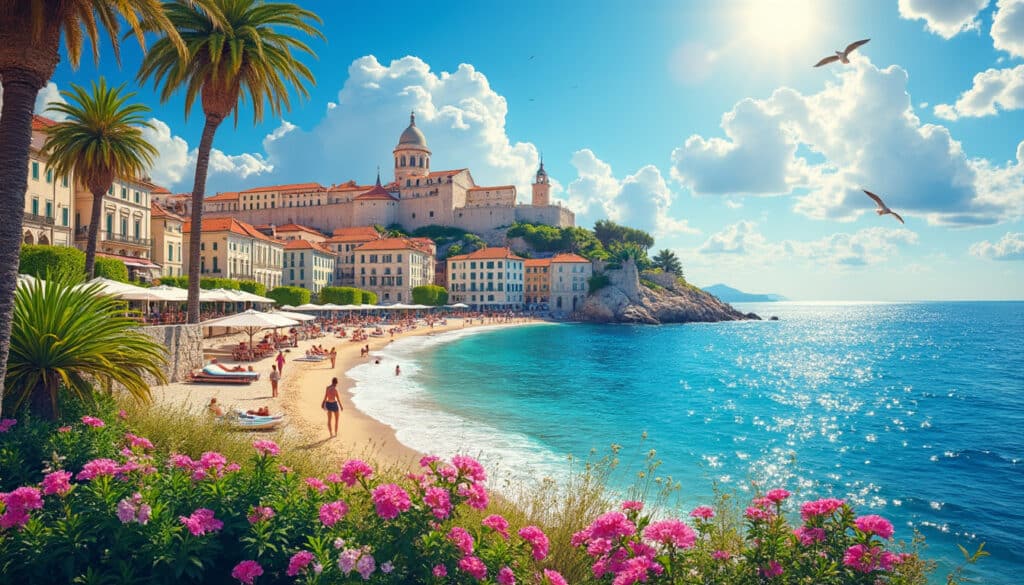
Embracing the picturesque views of the Dalmatian Coast, Split is not only a haven for history enthusiasts but also an intriguing destination due to its unique Mediterranean climate. This city perfectly combines cultural richness with weather nuances, offering a spectrum…
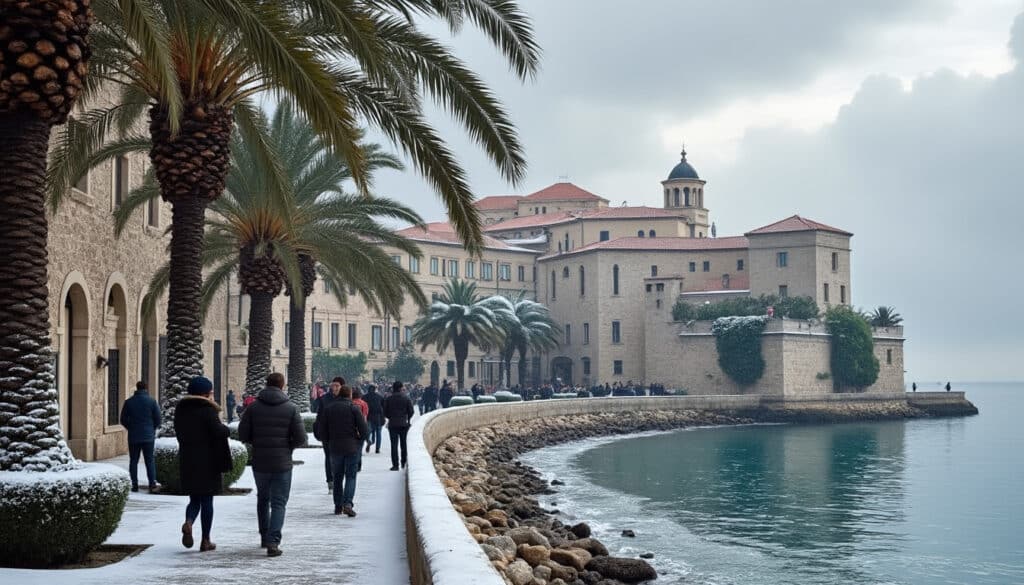
While Split, Croatia is widely celebrated for its radiant summers with tourists flocking to its historic sites and fetching beaches, the cold weather presents a different yet equally captivating charm. As a local guide with a keen interest in history,…

Flooding and natural risks in Split
The picturesque city of Split, renowned for its stunning architecture and rich history, faces a delicate challenge that requires immediate attention: the management of natural risks. As a city cradled along the Adriatic coast, Split enjoys the beauty of the…
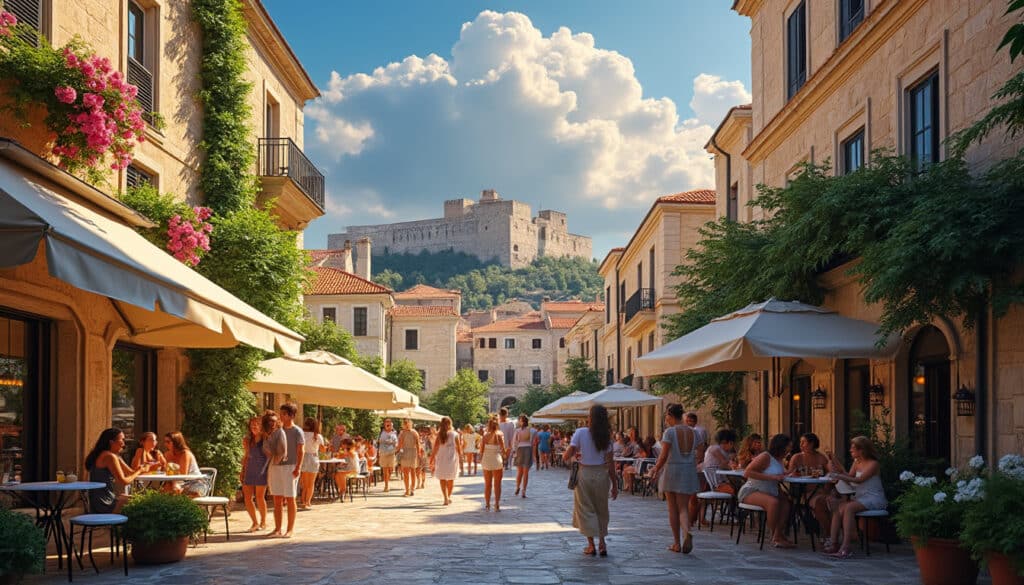
Split, Croatia is a city known for its stunning coastal views, rich history, and vibrant culture. Situated on the eastern shore of the Adriatic Sea, this picturesque location is not only famous for its architectural wonders and buzzing seafront but…

Is Split warm throughout the year?
Situated along the picturesque Adriatic coastline, Split, Croatia, is often heralded for its warm climate that seems to envelop the city with a perennial embrace. Let’s dive deep into understanding whether Split is indeed warm throughout the year and what…

Rain and precipitation in Split
Split, the charming city located along the Dalmatian Coast in Croatia, is known for its vibrant culture, historical sites, and scenic beauty. But aside from its cultural significance, the weather patterns, including rain and precipitation, play a vital role in…

Nestled along the azure Adriatic Coast, Split offers a distinct charm that varies with each season. Whether you’re drawn to the sun-drenched beaches in the height of summer or the tranquil ambiance of its less crowded months, Split promises an…
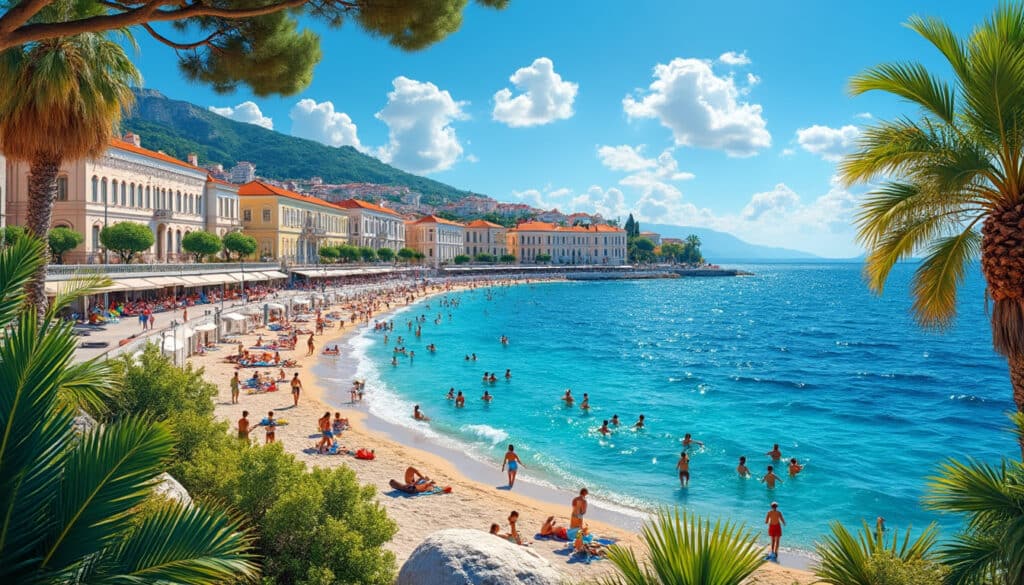
What is the weather like in Split?
Split, one of Croatia’s most vibrant coastal cities, is renowned not only for its rich cultural heritage and stunning landscapes but also for its unique climate. Travelers and residents often find themselves captivated by the mild and pleasant weather that…
Split, a picturesque city perched on the Dalmatian Coast of Croatia, is renowned for its stunning blend of ancient history and vibrant modern life. For both locals and tourists, understanding the nuances of its weather is crucial in ensuring a…
In Split, a city that gracefully hugs the Dalmatian coast, the heat of summer is not just a season but a vibrant experience. The panoramic views of the Adriatic, coupled with historic charm, render Split a captivating location. Summers are…

